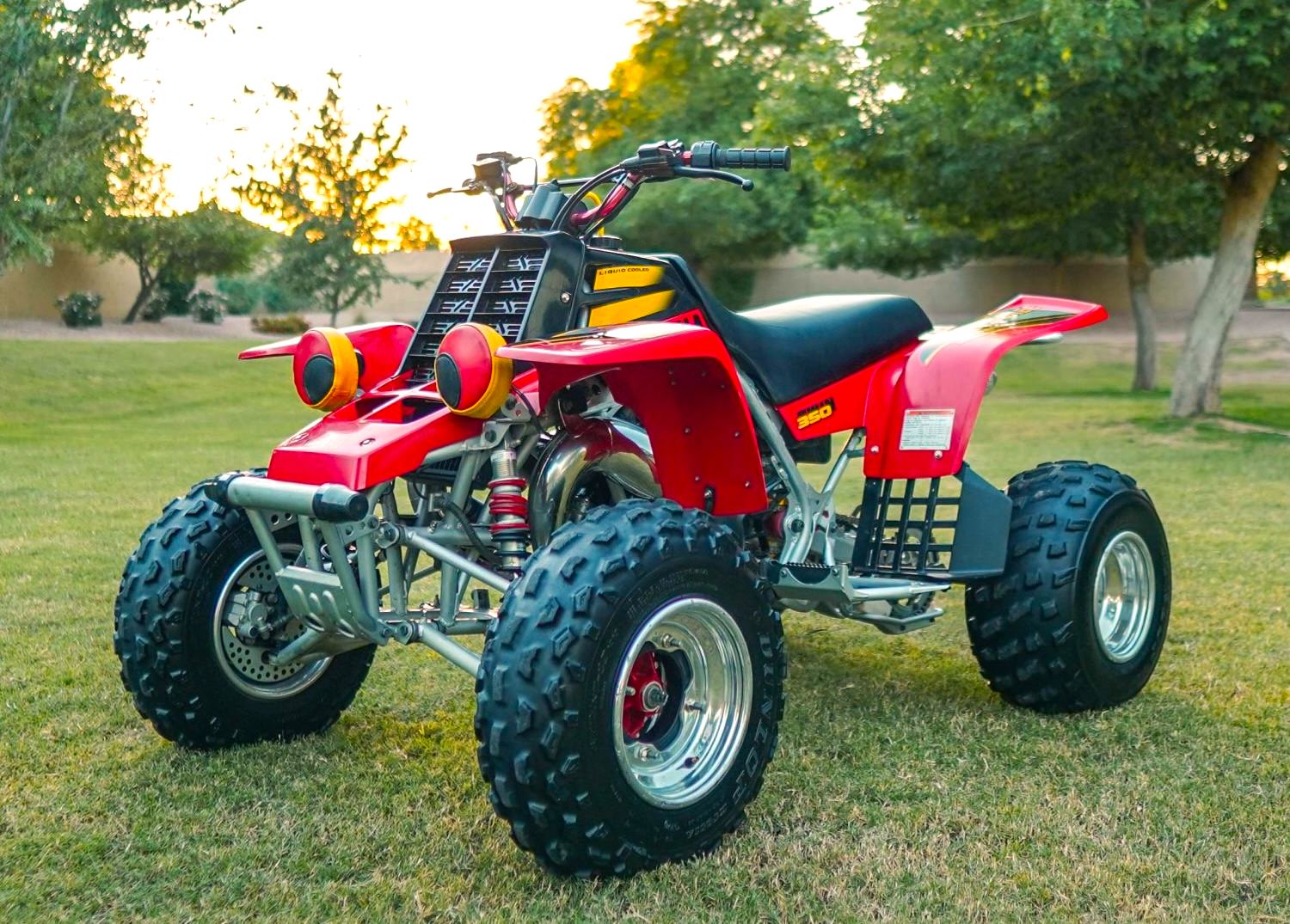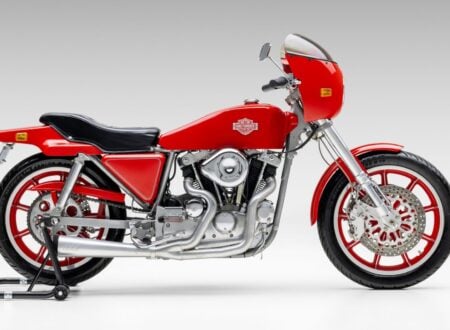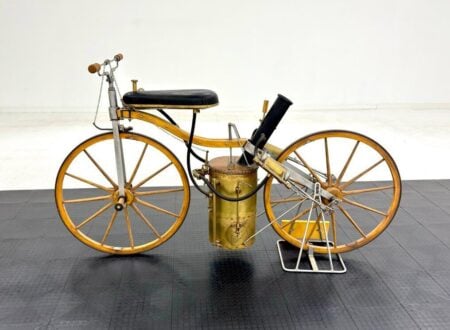This is 1999 Yamaha Banshee is a tidy example that now benefits from a full engine rebuild that was completed earlier this year – ensuring that it’s now ready for a new owner to take it out and have some howling, two-stroke fun with it.
The character of the 350cc two-stroke twin that powers the Banshee, combined with the excellent chassis and suspension set up on post-1991 models, has made it one of the most desirable of the vintage quad bikes – and there is a large community dedicated to keeping them in good running order.


History Speedrun: The Yamaha Banshee
The Yamaha Banshee arrived on the scene in 1987 as an outlier of sorts, it was a twin-cylinder, liquid-cooled two-stroke performance quad at a time when most rivals favored single-cylinder power units. Yamaha essentially adapted a non-powervalve version of its RZ350 street-bike engine for off-road duty, pairing that lively 347cc reed-valve twin with a 6-speed manual and chain drive.
From the start, the Banshee was about character – it had a razor-sharp throttle response, a wailing exhaust note, and a powerband that rewarded skilled (and committed) riders. US sales ran through to the 2006 model year, while Canada continued until 2008 and Australia into 2012, a long tail that says plenty about demand in dune and drag communities worldwide.
Early machines used J-arm front suspension, which Yamaha replaced with double A-arms for 1991 to improve handling and overall suspension geometry. Brakes were hydraulic discs front and rear, and the well-designed chassis kept the quad low, wide, and predictable at speed.
Stock specification settled into a familiar groove over time – dual 26 mm Mikuni carburetors, a 6.5:1 compression ratio, a 50.4 inch wheelbase, 31.5 inch seat height, and a listed dry weight of 386 lbs though this did vary somewhat based on model year). In stock trim the Banshee was commonly quoted in the mid-30s for brake horsepower, though the platform’s real draw was how eagerly it responded performance mods – specifically to pipes, porting, and jetting.
Yamaha treated the Banshee to steady annual tweaks rather than sweeping redesigns, this is why enthusiasts largely focus on “spotter’s guides” that catalog year-by-year colors, graphics, and small hardware changes. Those cosmetic evolutions, plus the 1991 front-end update and detail differences in hubs, tires, and braking systems, help identify surviving examples today.
When the Banshee landed, the benchmark sport quads were two-stroke singles aimed squarely at racing. Suzuki’s LT250R “QuadRacer” essentially ushered in the modern four-wheeler race era, followed by the famously challenging-to-ride LT500R “Quadzilla”, whose 500cc two-stroke and long wheelbase delivered the straight-line speed that could bestow legend status on some riders, and an ambulance trip on others.


Honda’s TRX250R brought sharp handling, high-end suspension, and genuine racing pedigree. Against that trio, the Banshee cut a different path – it was less motocross-focused than the 250s, heavier in rough dirt, but devastatingly quick in the dunes and on long fire roads thanks to the twin’s revvy top end and a gearbox that liked to be worked.
Regulation and market tides eventually pushed high-performance ATVs toward four-stroke power units. Yamaha’s own Raptor 660/700 family and 450 class race quads (from multiple brands) set the tone in from the 2000s and onward, with fuel injection, broader torque curves, and markedly cleaner emissions.
That same shift ultimately ended Banshee sales in the US after 2006, even as overseas markets kept the flame burning just that little bit longer. That said, the Banshee’s cult following never seemed to fade. The engine’s motorcycle lineage, the simplicity of kick-start and premix, and an aftermarket measured in miles make it one of the most modified sport quads ever.
You’ll still find period-correct machines running stock carbs and pipes, but the scene is full of dune builds, drag specials, and meticulously restored colorways that mirror the last “Team Yamaha” blue editions.
The 1999 Yamaha Banshee 350 Shown Here
This Yamaha Banshee 350 is a well-preserved example of Yamaha’s legendary high-performance sport ATV from 1999. The seller bought it in 2025 from the original owner, and subsequently commissioned a full engine rebuild that included a new clutch, Hot Rods crankshaft assembly, Wiseco pistons, and a new K&N air filter.
As you would expect, power comes from a liquid-cooled 347cc two-stroke parallel-twin paired with a 6-speed manual transmission and a chain drive. The engine breathes in through dual Mikuni carburetors and out into an FMF two-into-two expansion-chamber exhaust system.
Finished in red with multicolor graphics, the Banshee keeps its original styling and silver tubular steel frame. It has a black solo seat, nerf bars, and a 3.2 gallon fuel tank, along with headlights that have been fitted with retro color-matched covers. Multi-piece wheels wear older tires showing sidewall cracking, and a spare set of sand-tread wheels are included – the new owner would be wise to budget for some new tires before any riding is attempted.


Suspension is handled by Works Performance shocks and double wishbones up front, with an adjustable piggyback-reservoir monoshock and swingarm at the rear. Braking is handled by two hydraulic discs up front and a single unit on the rear axle. The controls are mounted to a Renthal cross-braced handlebar with standard switchgear and thumb throttle, and like most Banshees, it lacks instrumentation.
It’s now being offered for sale out of Queen Creek, Arizona on Bring a Trailer with a set of spare wheels, spare parts, and a clean Arizona title in the seller’s name. If you’d like to read more or place a bid you can visit the listing here.
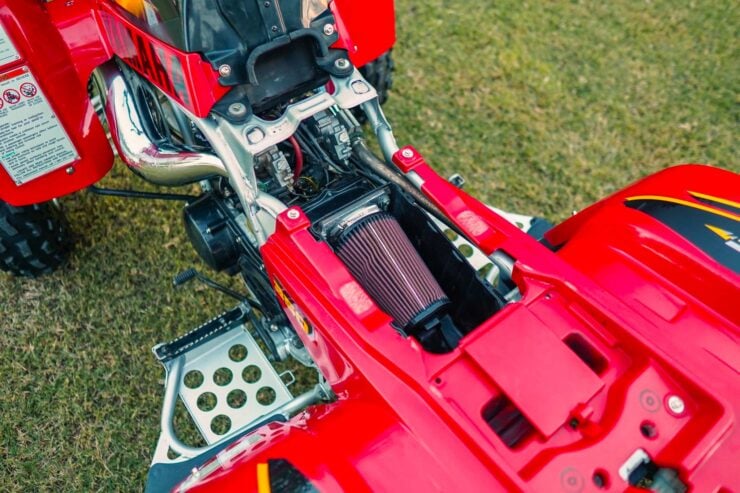
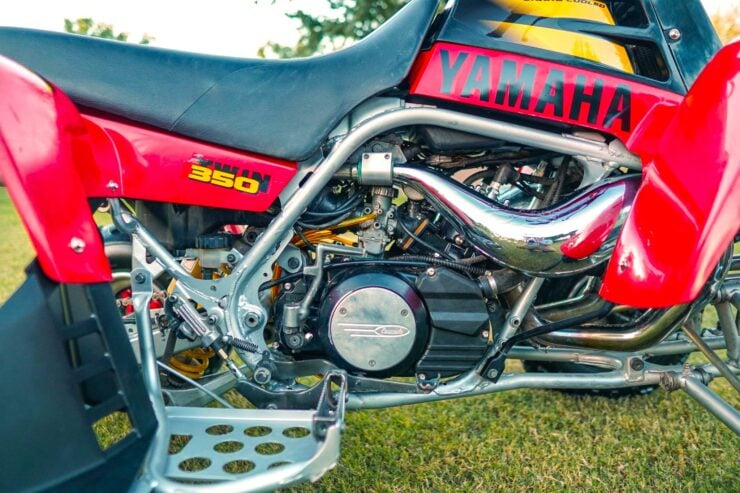
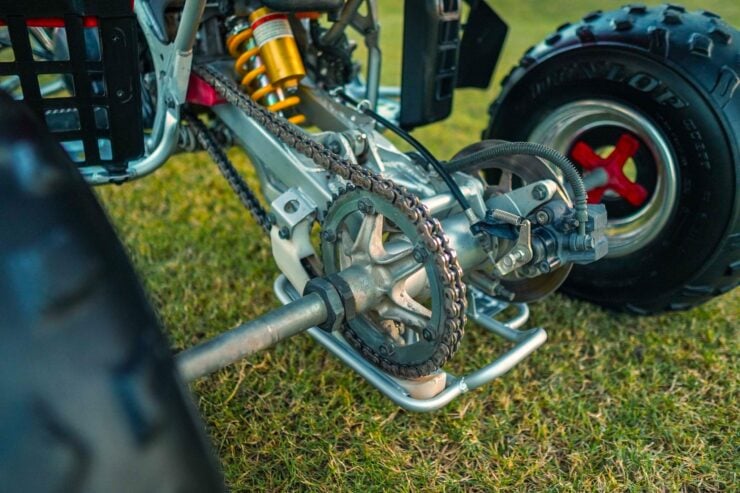
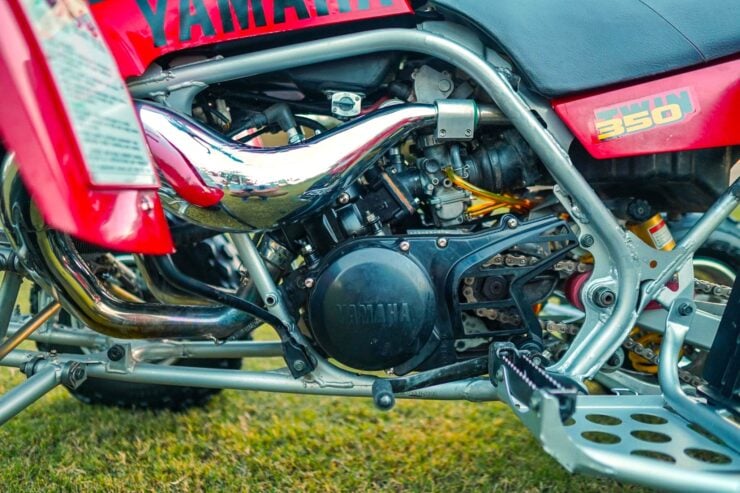
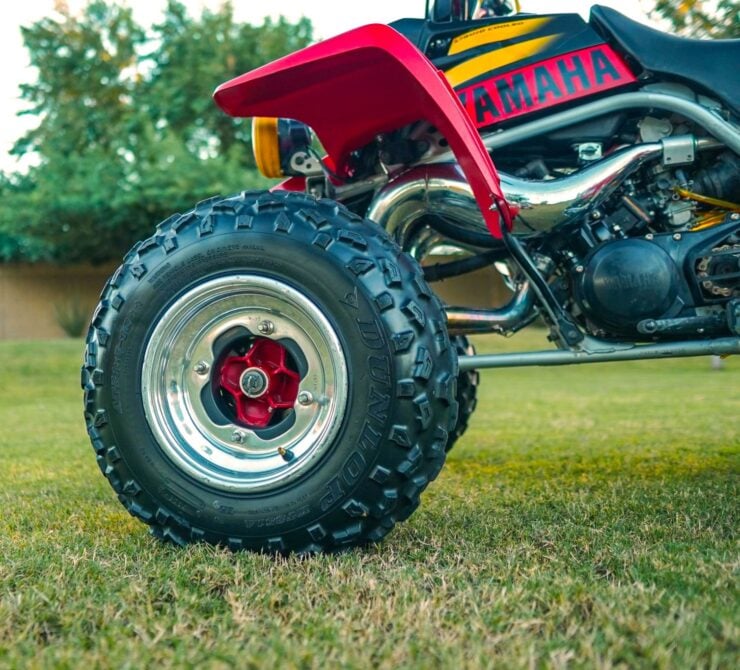
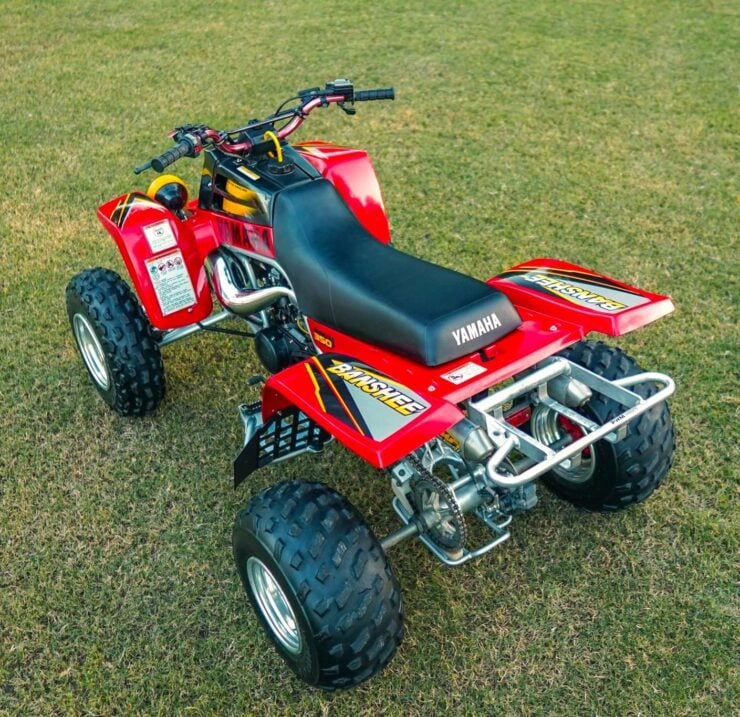
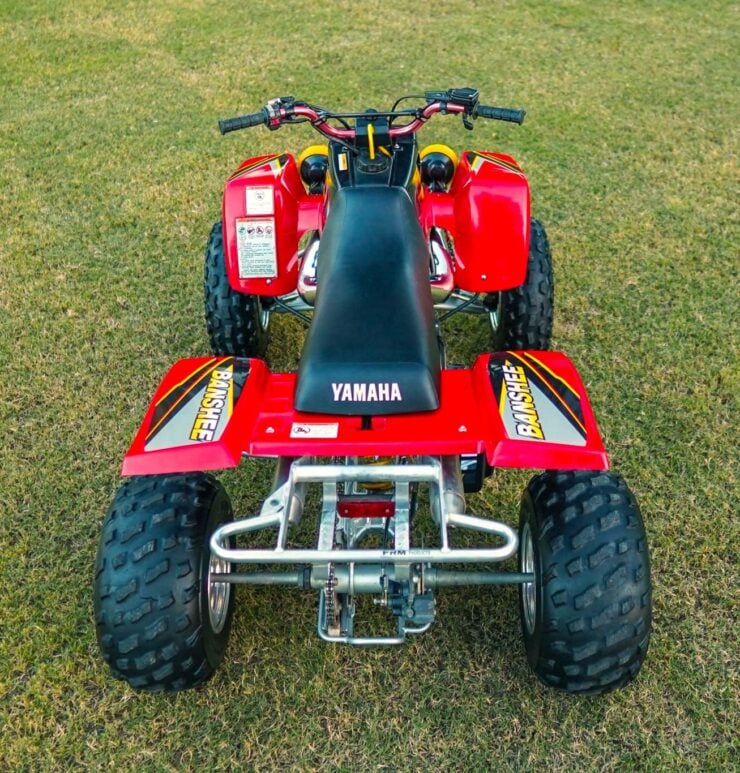

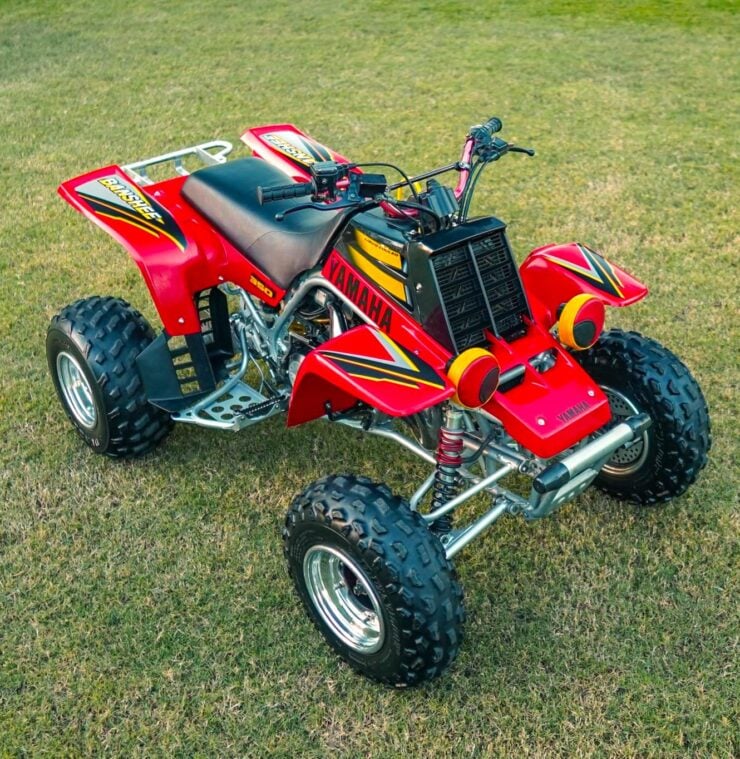
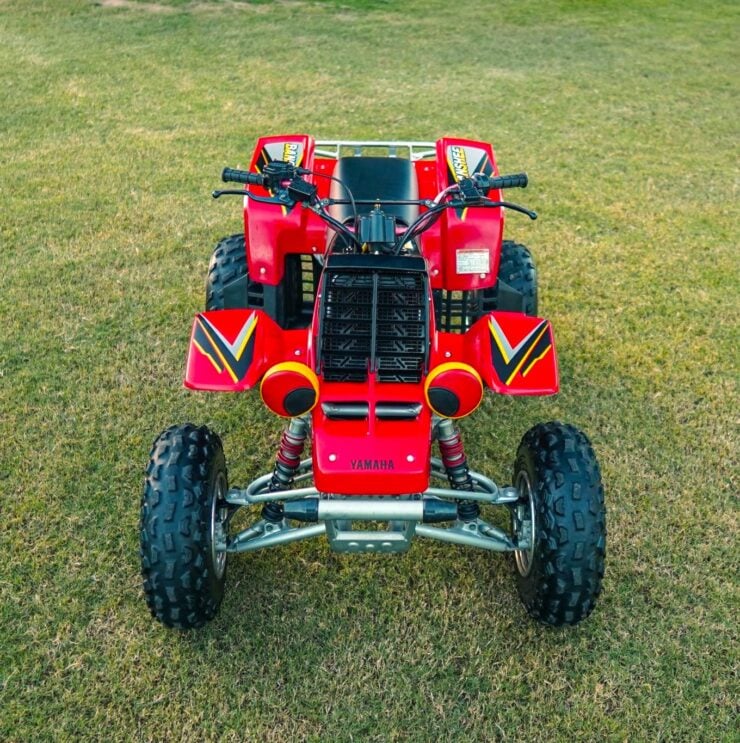
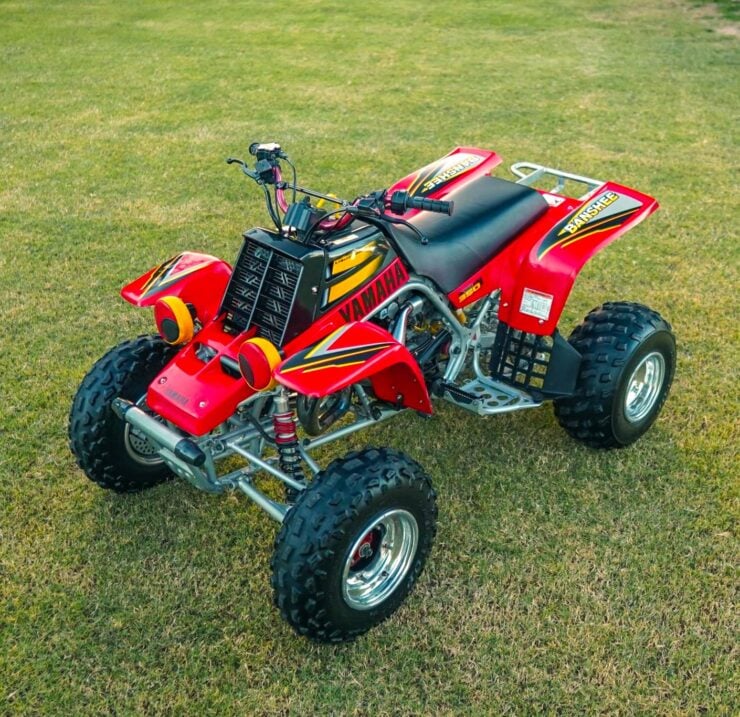
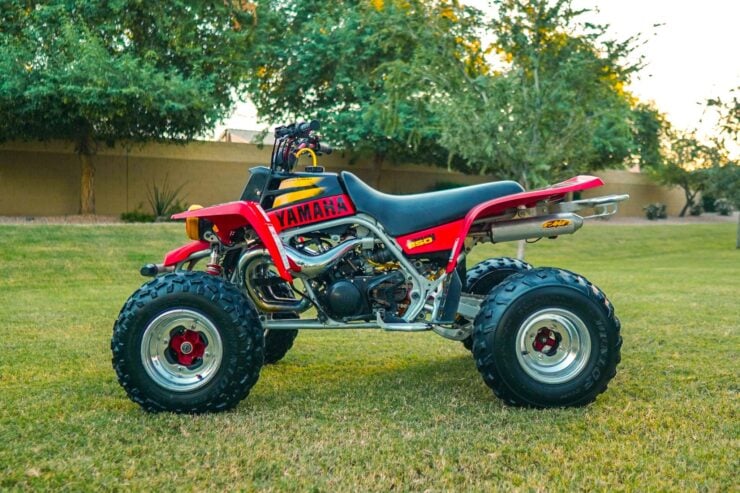
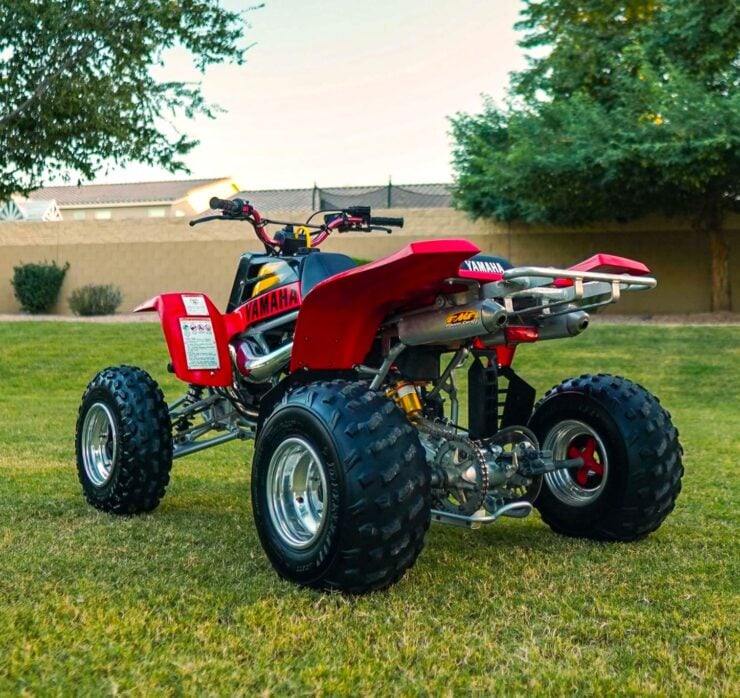


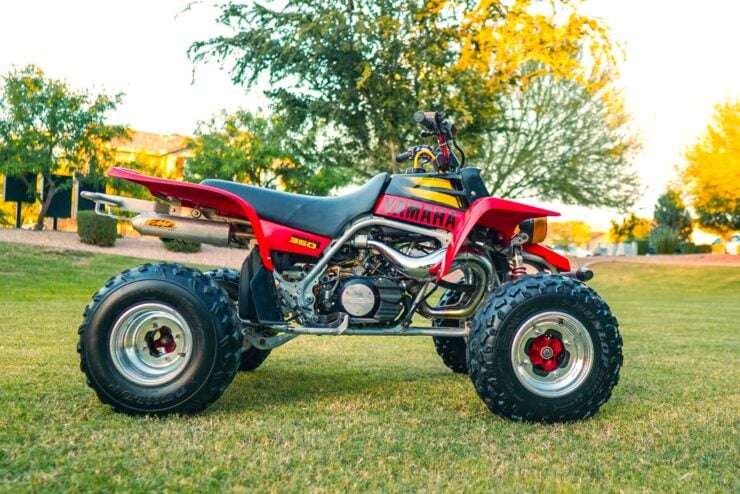
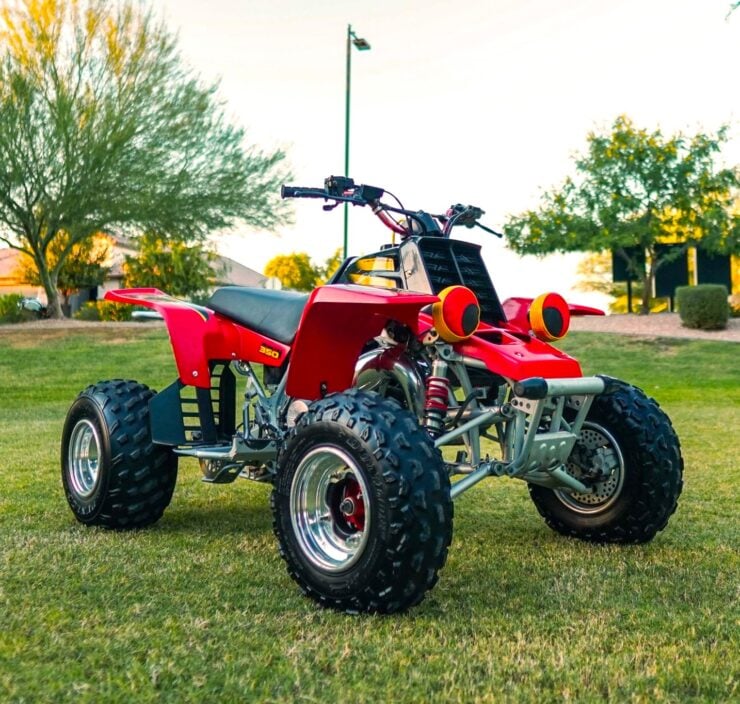
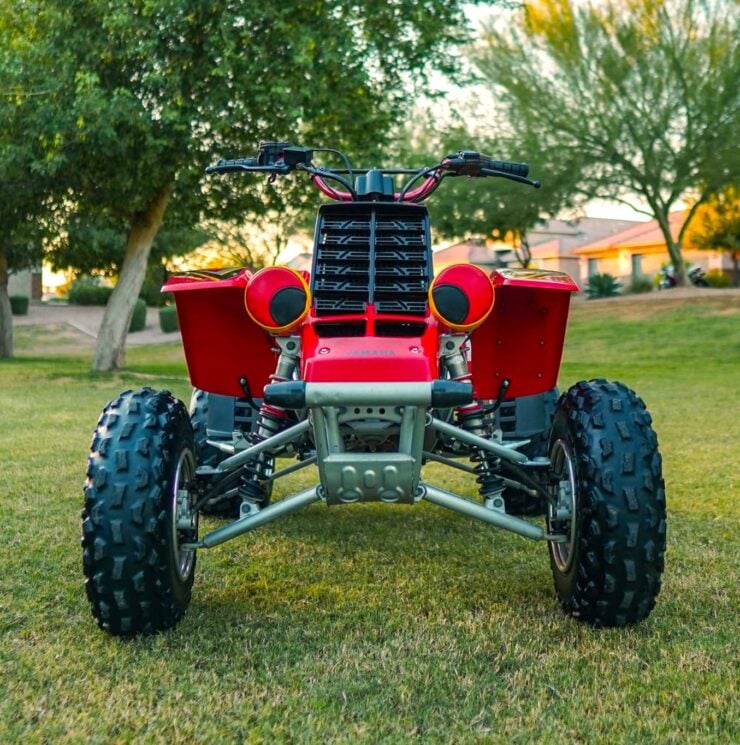
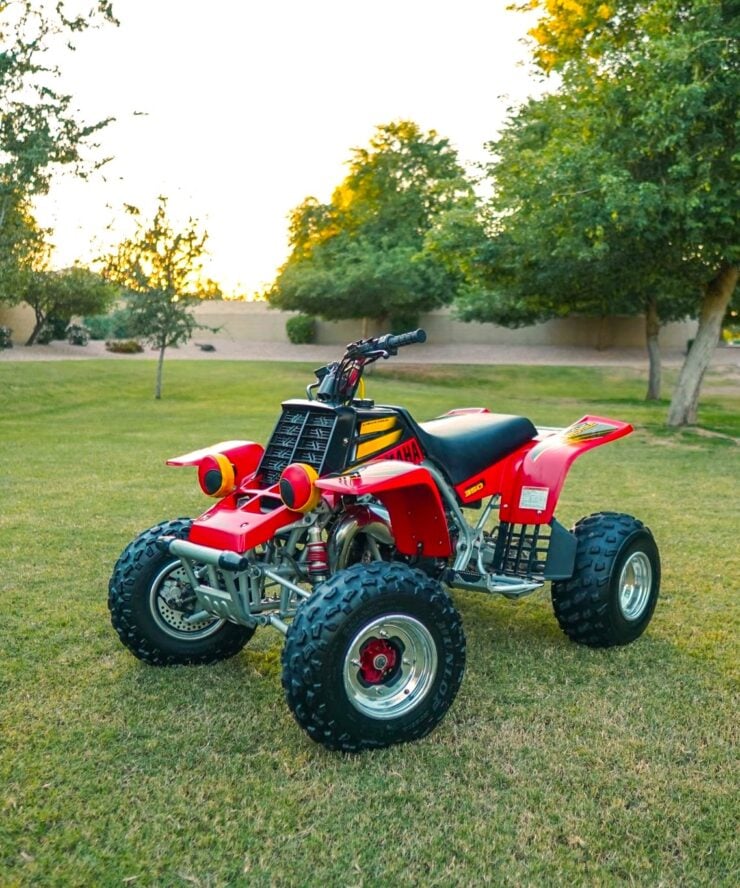
Images courtesy of Bring a Trailer

